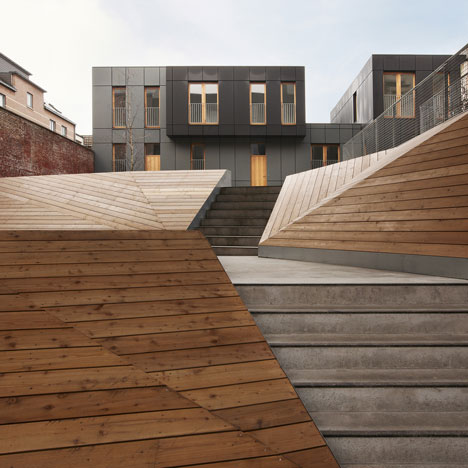
Le Lorrain by MDW Architecture
Belgian practice MDW Architecture has completed a residential complex in Brussels using industrial materials that reference the site's former use as a scrap metal dealership (photos by Julien Lanoo).
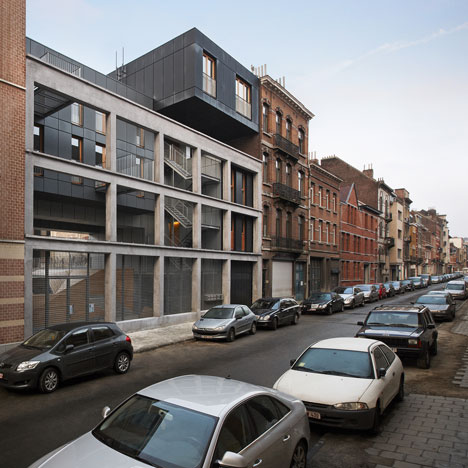
An apartment building and terrace containing three maisonettes are clad in galvanised steel sheeting normally found in factories and warehouses.
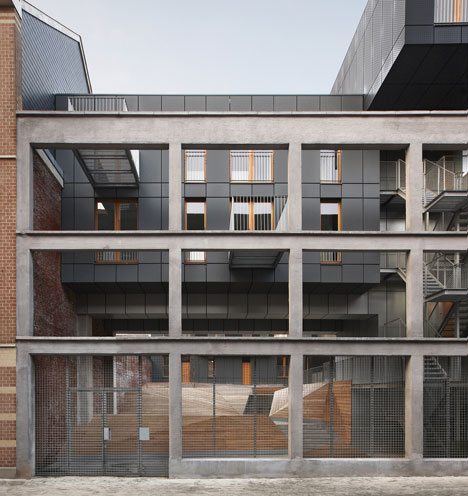
The original street front has been maintained and a layer of steel mesh added for protection and for climbing plants to grow on.
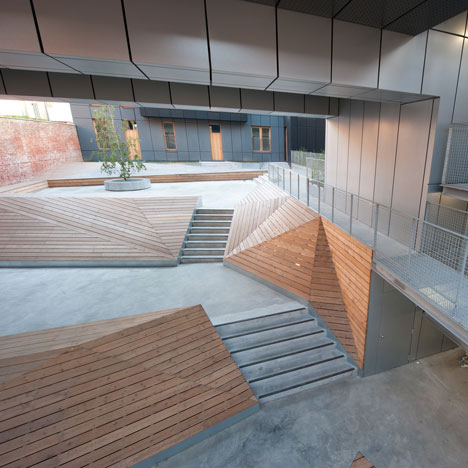
The homes are arranged around a central courtyard with meeting and play areas for the residents.
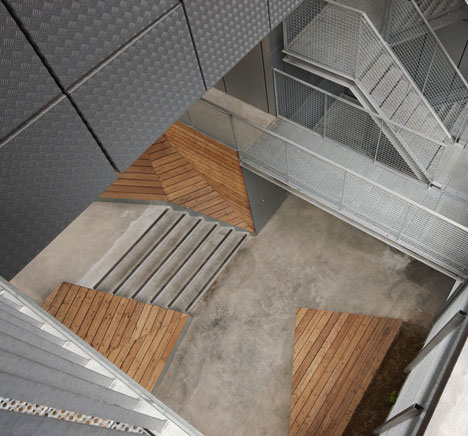
Wood is used for the terraces, benches and window frames to soften the industrial aesthetic.
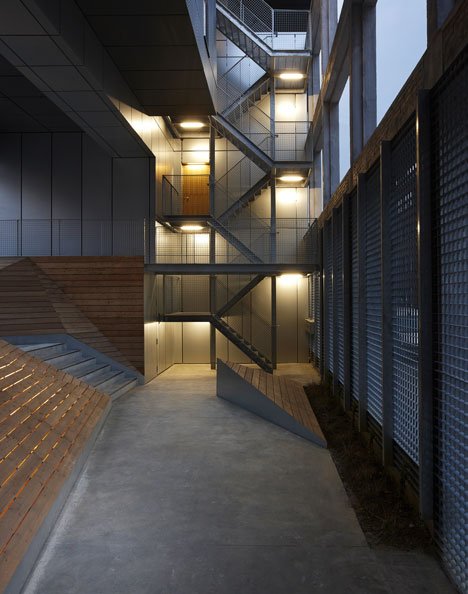
Apartments at the front of the site are raised to improve light quality, with parking incorporated underneath.
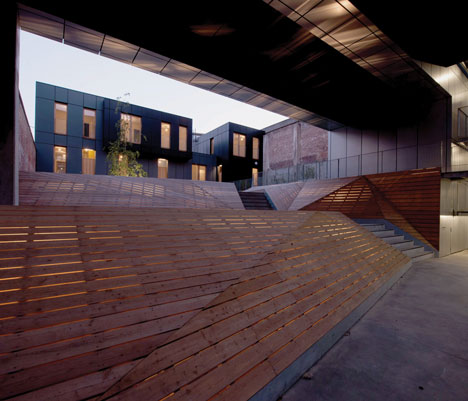
More photography by Julien Lanoo on Dezeen »
The following text is from the architects:
Residential complex Le Lorrain, Brussels – Belgium
Renovation of the former Brumétal dealer of old iron into a social housing complex composed of a 4-flat building connected by a large common open space to 3 maisonettes at the rear of the site.
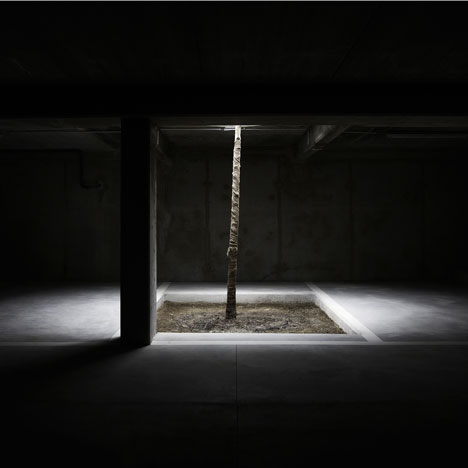
Urban scale
This residential beacon project for the district contract « Maritime » consists in clearing and opening up the interior of the plot that was entirely built and making this portion of the street “breathe” thanks to a wide opening. It aims at giving the neighbourhood a new spring through a both strong and suitable contemporary architectural and urban intervention that benefits the community while keeping a trace of the industrial past of the neighbourhood.
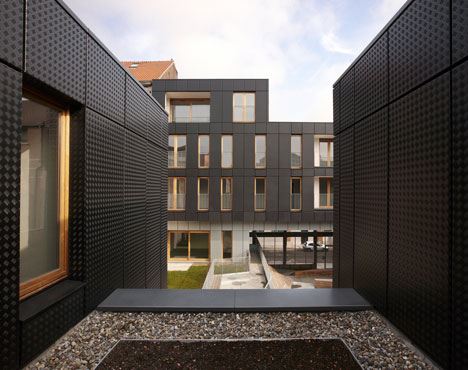
Architectural design
The general design reflects a contemporary approach based on the genius loci and on the requirements from the program. It includes different typologies of accommodations: simplex, duplex and triplex from 2 to 4 bedrooms and organised in one apartment building and 3 terrace houses at the rear of the site. Architectural and environmental quality is privileged.
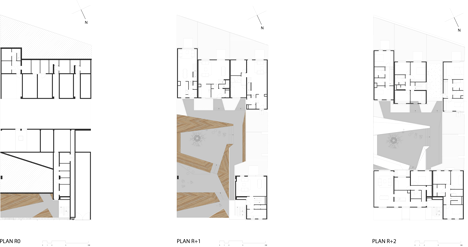
Click above for larger image
Because the site was tightly enclosed by high party walls it was decided to clear the interior of the plot and to raise the maisonettes in order to maximise the amount of light captured and to take advantage of the best sunlight. This also allowed to accommodate a garage at street level and to avoid a total depollution of the site.

Click above for larger image
On the street front, the apartments have been raised and pushed back to create a first visual sequence between the road and the complex. By lowering the eastern party wall the oppressing feeling of the interior of the plot is reduced and more light penetrates into the interior of the plot.
A large circulation area is carved within the site and creates a wide meeting and playing area for residents. Each house also features a private garden and a recessed entrance to put some distance between the front door and the public space.
Materials
The existing street front has been kept and it dialogues with the apartments through the volumes and the bridges/terraces. Hot dip galvanised steel fencing fixed to the old façade creates a vandal-proof filter between the street and the internal space and serves as support for creeping plants.
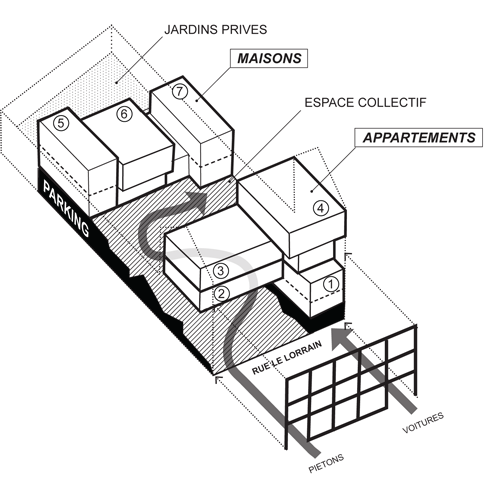
The buildings are clad with grey metallic sheets whose aspect reminds of the industrial character of the plot. A light alternation of their shade and treatment reinforces the volumes: In particular, hot dip galvanised steel sheets identify the distribution and circulation functions.
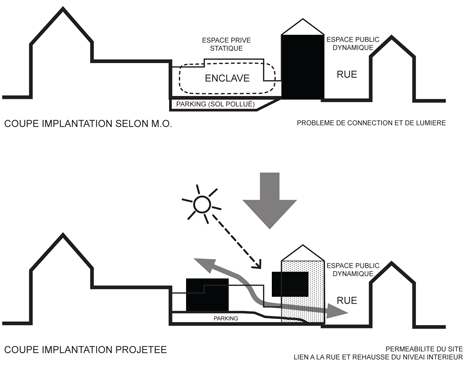
The choice of internal and external materials is induced by the necessity of robustness and durability, but warm wooden elements are used for contrast in more tactile areas like doors, windows, railings, terraces or benches.
Another important element of the architectural composition is the vegetation: creeping plants along the street font and the party walls, planted common space that includes a tree, private gardens and green roofs.
Project information:
Client : Commune de Molenbeek-St-Jean (public)
Team : MDW ARCHITECTURE, Waterman TCA (Structural Engineer), MK Engineering (M&E Engineer)
Dates : 2009-2011 Surface : 835 m2
Budget : 1.5M €